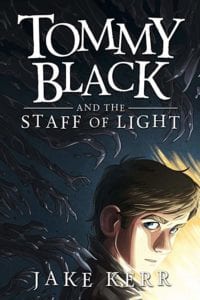
It’s the question I am asked the most: “Why are you self-publishing?” One of the reasons I’m asked the question is that the road to a traditional publishing contract and agent representation is open to me. Of course there are no guarantees, but after being nominated for two of the most respected awards in fantasy and science fiction, the interest is definitely there. And for many writers, turning your back on that path makes no sense.
But I did it, and I’m glad that I did. So the question, again, is—why? Well, there are a lot of reasons, from freedom to create and guide my career to the entrepreneurial assessment of greater reward against greater risk. Still, it is one thing to exchange the emails with New York publishers and agents, talk to your friends and family, assess the landscape, and then decide to self-publish. It is another thing entirely to actually go out and get it done.
This series of essays will be about my journey to go out and get it done. As I write this, I’m still in the building stages, and the future is unclear. So this journey will be one that we both take together. At the end, I may not achieve anything like success, but we’ll both learn a lot in the process.
So far I’ve written the first novel in my series, Tommy Black and the Staff of Light, and revised it through critique sessions, a development edit, and a line edit. I have friends who share critiques, and my wife is a talented line editor, so this step cost me nothing. With a finished document, I then created the print and ebook editions.
I hired M.S. Corley to do the cover of both the ebook and paperbook. This was a significant but reasonable expense. I designed the ebook edition in Scrivener, and the paperback in Adobe Indesign, using a custom font I purchased. The paperback interior took a long time to design, but I love the final look. So the only cost here was the font, which was a bit more than one hundred dollars, and the software costs.
For paperback distribution, I decided on Createspace for Amazon, and IngramSpark everywhere else. This was purely a financial decision, as Ingram is better in non-Amazon markets. For the ebook I decided to go exclusive with Amazon for the first 90 days so I could take advantage of Kindle Unlimited and the holidays.
I then used wix.com to create a series website for the books at www.tommyblackseries.com. I also updated my own website. And with those pieces I felt I had all of the core elements in place. All that is left is marketing.
In the next issue I’ll give you a detailed overview of my marketing efforts, but for now let me leave you with my theory, which, perhaps depressingly, starts with luck.
The concept of luck is often discussed in publishing circles. You hear it all the time: This best-selling author isn’t good; he or she’s lucky. If there is a kernel of truth in this (and I believe there is) then the primary goal of the self-publisher is to put him- or herself in as many positions to be lucky as possible. This is obviously extremely difficult, and it is harder when you are self-publishing, but it can be done.
Which leads me to starting a fire. Have you ever seen someone try to start a fire with a flint? Luck is having the shavings catch fire because the spark lands in the right spot at the right time. There is no way to predict which stroke of the flint will catch.
Despite the element of luck, you can still light a fire nearly every time through the persistence of creating as many sparks as possible. And this is the essence of my self-publishing journey that you will be reading this year: My attempt to use the flint to create a spark that will catch the fire.
So far I have failed, and I will fail again, and again, and again. But I will keep working the flint in the hope that it will eventually catch fire. Pull out a stick and some marshmallows and join me.
